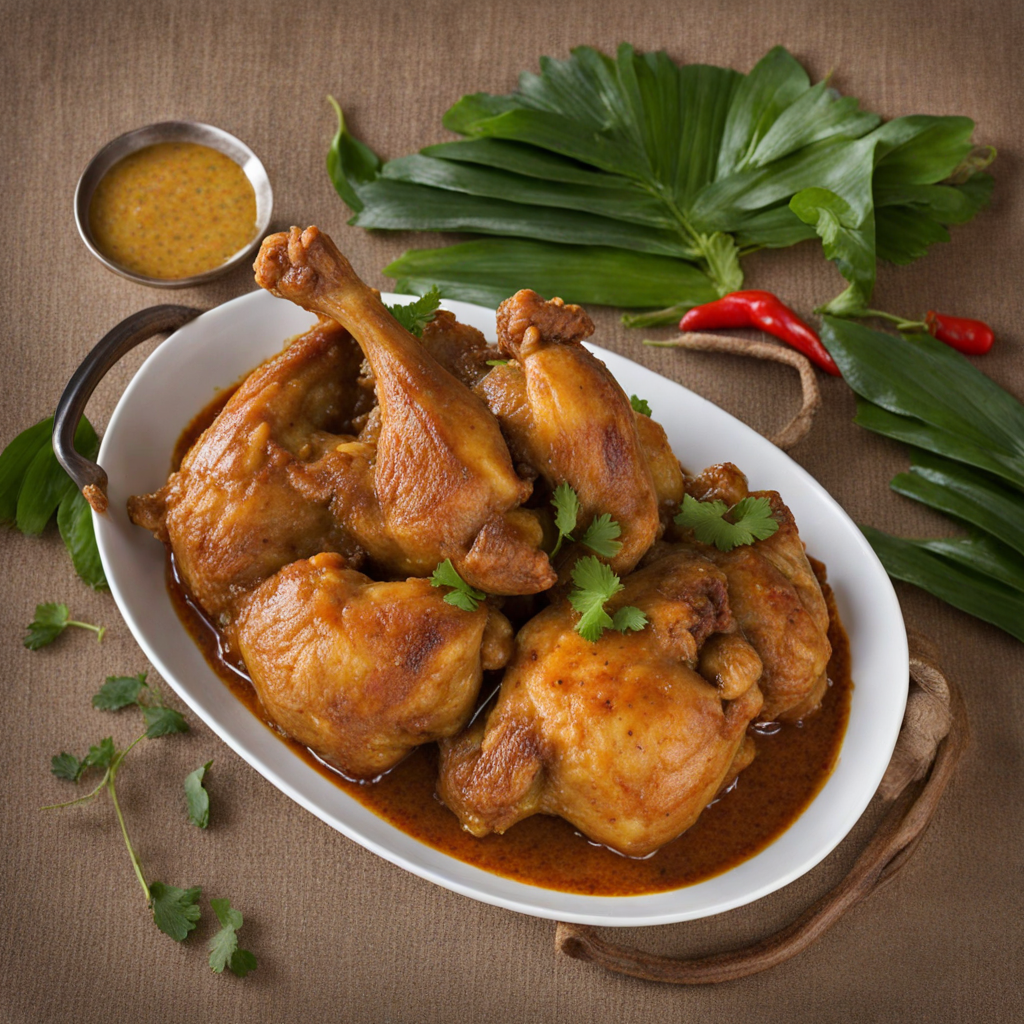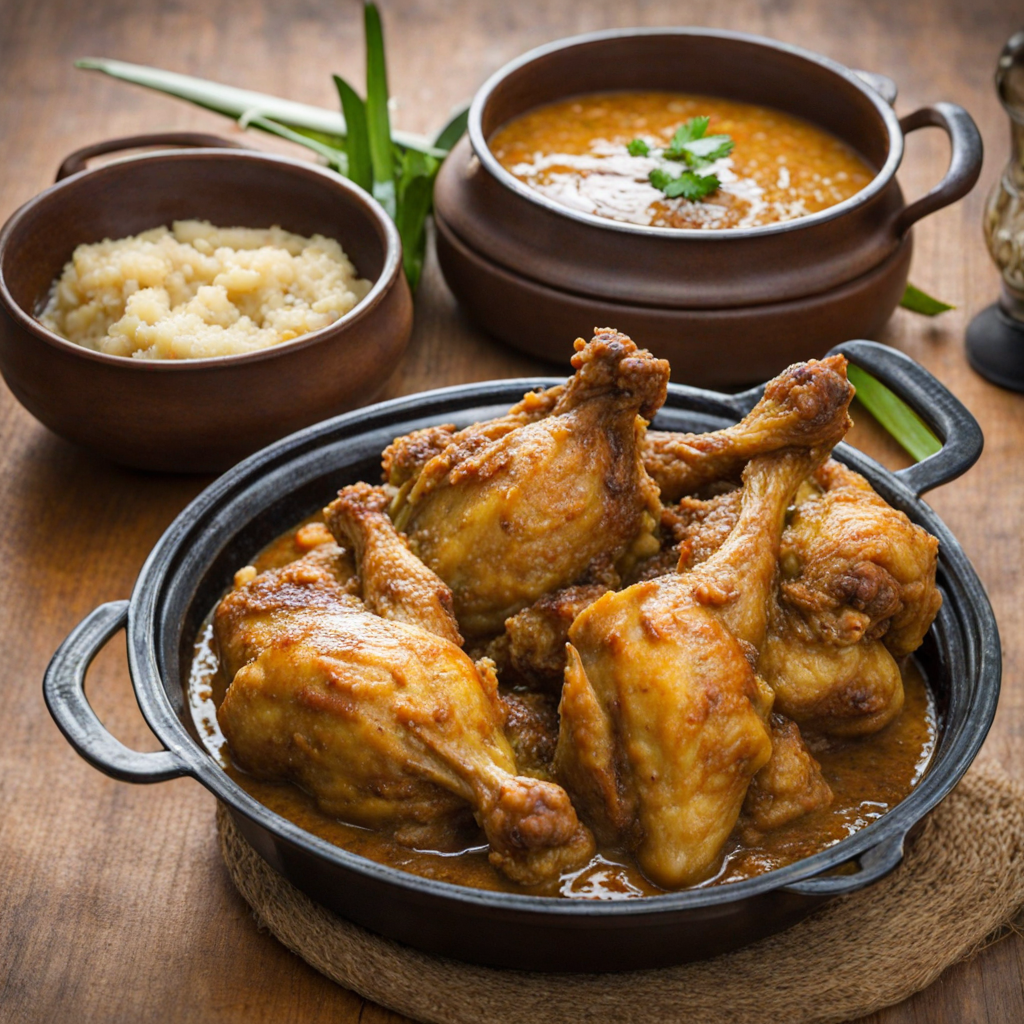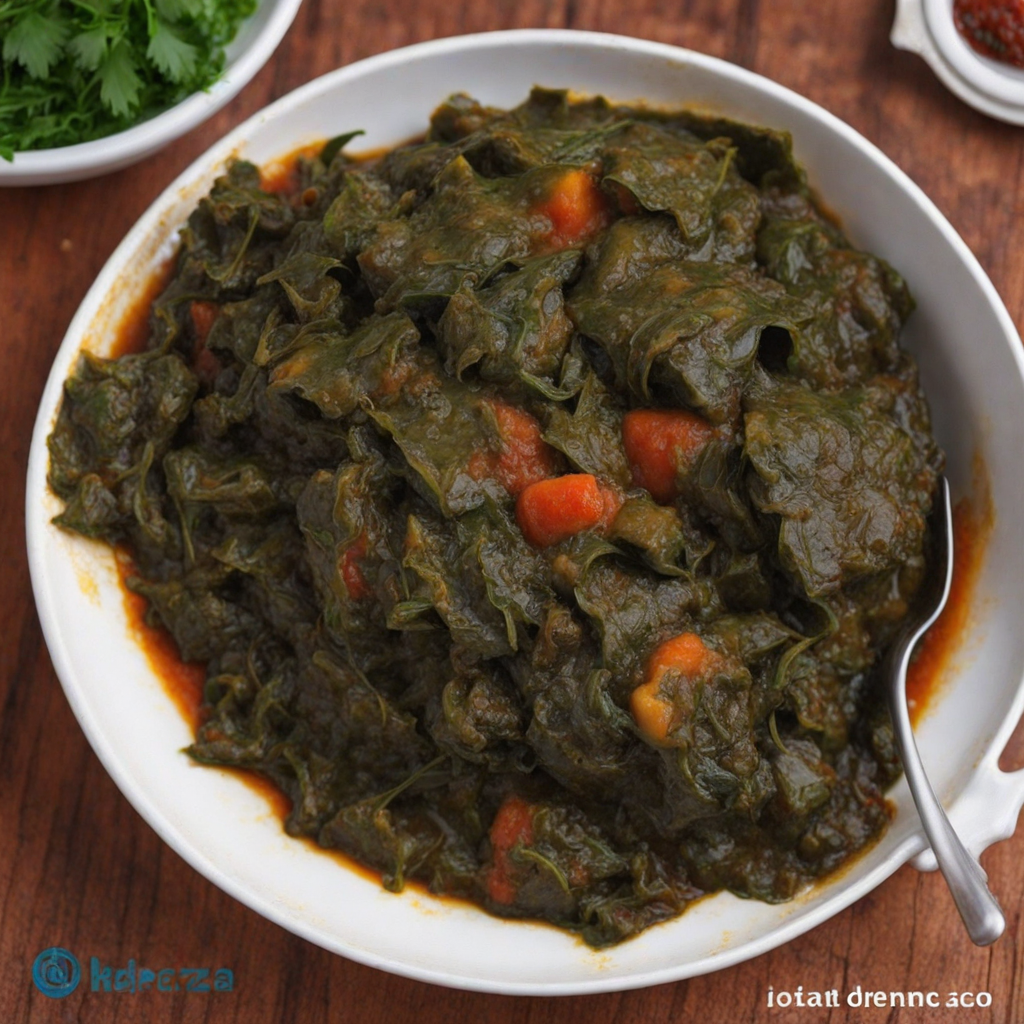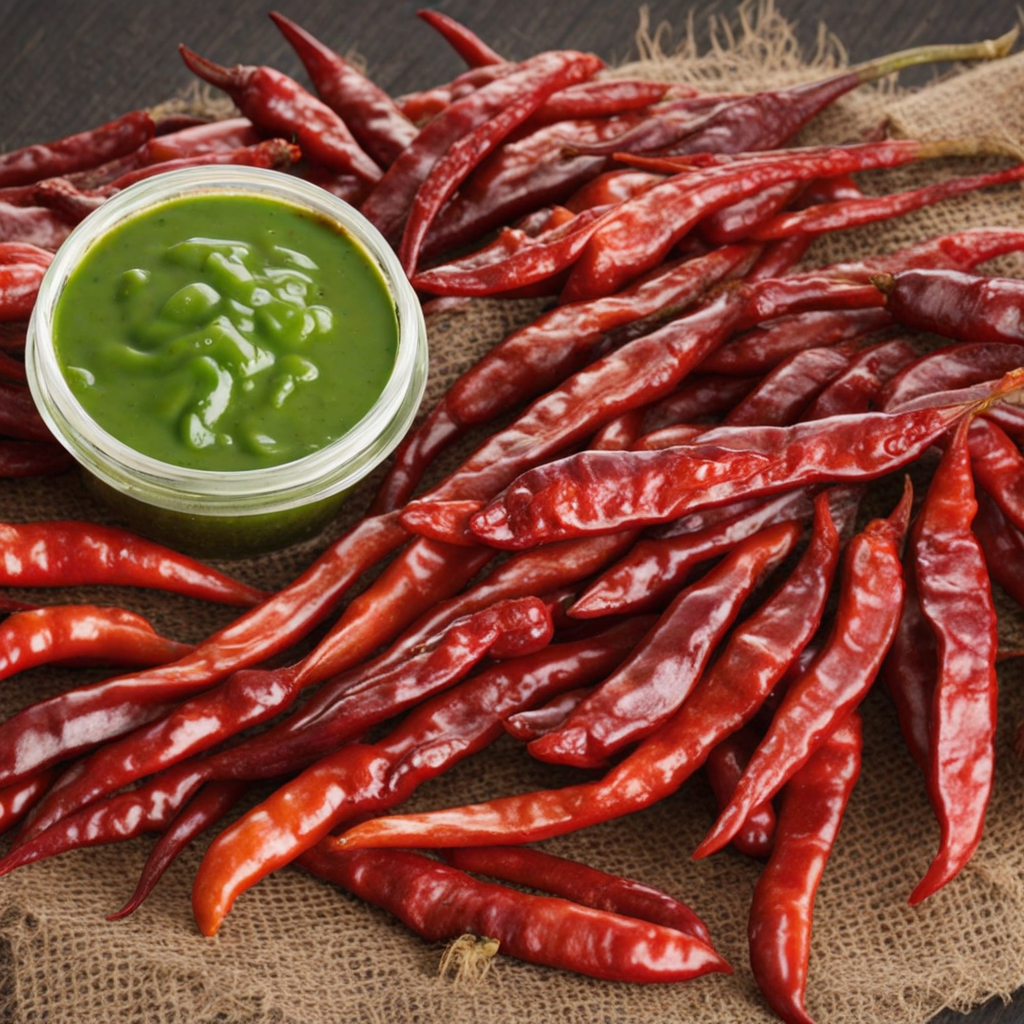Poulet à la Moambé
Poulet à la Moambé is a vibrant dish that showcases the rich culinary traditions of the Democratic Republic of the Congo. At its core, the dish features tender chicken that is marinated and then cooked slowly in a luscious sauce made from groundnut (peanut) butter, tomatoes, and a blend of aromatic spices. The creaminess of the peanut butter melds beautifully with the acidity of the tomatoes, creating a harmonious flavor profile that is both comforting and exciting. The addition of local spices and seasonings infuses the dish with warmth and depth, inviting you to savor each bite. The preparation of Poulet à la Moambé is a celebration of the ingredients that reflect the lush landscapes of the Congo. The chicken is often cooked with onions, garlic, and a hint of chili, providing a savory and slightly spicy undertone that elevates the dish. Served over a bed of fluffy rice or alongside plantains, the dish is designed to be a communal experience, encouraging sharing and enjoyment among friends and family. The vibrant colors of the sauce, golden brown chicken, and accompanying sides make for an eye-catching presentation that is sure to impress. As you explore Poulet à la Moambé, you'll discover a taste that is distinctly Congolese, with a blend of textures and flavors that dance on the palate. The nutty richness, paired with the succulent chicken and fresh ingredients, creates a satisfying meal that tells a story of the region's heritage and culinary artistry. Each bite of this dish is not just a taste but an invitation to experience the heart of the Democratic Republic of the Congo through its food.
How It Became This Dish
Poulet à la Moambé: A Culinary Journey through the Heart of the Congo Origins of Poulet à la Moambé Poulet à la Moambé, a dish deeply rooted in the culinary traditions of the Democratic Republic of the Congo (DRC), epitomizes the intersection of indigenous ingredients and colonial influences that characterize Congolese cuisine. The term "moambé" refers to palm oil, a staple fat derived from the fruit of the oil palm tree. This oil not only serves as a cooking medium but also embodies the rich agricultural heritage of the region, where palm trees flourish in the humid climate. The origins of Poulet à la Moambé can be traced back to the early interactions between local Congolese tribes and European colonial powers. While chicken was not a native bird to the region, it was introduced by Portuguese traders in the 16th century. The indigenous peoples quickly adapted to this new protein source, incorporating it into their traditional cooking styles. The fusion of chicken with local ingredients such as palm oil, peanuts, and various spices led to the creation of Poulet à la Moambé, a dish that reflects both the land and the people. Cultural Significance In Congolese culture, food is more than sustenance; it is a vital aspect of social life and identity. Poulet à la Moambé is often prepared for special occasions, family gatherings, and celebrations. Its rich, savory flavor and vibrant presentation make it a centerpiece at communal meals, fostering a sense of togetherness among family and friends. The dish is an embodiment of hospitality, as sharing food is an expression of goodwill and community. The preparation of Poulet à la Moambé is often a communal activity, involving family members in the cooking process. The gathering around the stove or fire not only allows for the sharing of culinary skills but also for storytelling and the passing down of traditions. In this way, the dish serves as a vehicle for cultural transmission, connecting generations through shared experiences. Moreover, Poulet à la Moambé has found a place in the broader context of Congolese identity, especially in the diaspora. For Congolese expatriates, preparing this dish can evoke feelings of nostalgia and pride, serving as a reminder of home and heritage. It has become a symbol of resilience and cultural continuity, even in foreign lands. Development Over Time Throughout the years, Poulet à la Moambé has evolved, influenced by various factors including globalization, migration, and changing culinary trends. While the traditional recipe remains beloved, modern interpretations have emerged, often reflecting the availability of ingredients and the preferences of contemporary cooks. Traditionally, the dish is made by marinating chicken in a mixture of spices, garlic, and sometimes vinegar, before cooking it in a generous amount of palm oil. The chicken is simmered until tender, often accompanied by a sauce made from ground peanuts, tomatoes, and local spices. This combination results in a rich, flavorful dish that is typically served with rice or plantains, both of which are staple carbohydrates in Congolese cuisine. In urban areas, where ingredients may vary, cooks have adapted the recipe to include readily available substitutes. For instance, vegetable oil may replace palm oil, and different proteins such as goat or fish may be used. Additionally, the influence of global culinary trends has led to the incorporation of new spices and flavors, infusing the dish with a contemporary flair while still honoring its traditional roots. The globalization of food culture has also facilitated the spread of Poulet à la Moambé beyond the borders of the DRC. With the rise of African restaurants and the growing interest in diverse cuisines, the dish has gained popularity in international culinary scenes. Chefs and food enthusiasts often showcase it at food festivals and cultural events, celebrating its rich history and unique flavors. Challenges and Preservation Despite its cultural significance, the culinary heritage surrounding Poulet à la Moambé faces challenges. Urbanization and globalization threaten traditional food practices, as younger generations may gravitate toward fast food and convenience meals. The loss of traditional cooking methods and local ingredients poses a risk to the authenticity of the dish. In response to these challenges, various initiatives have emerged to promote the preservation of Congolese culinary traditions. Community cooking classes, cultural festivals, and online platforms dedicated to Congolese cuisine are helping to raise awareness about the importance of maintaining these food practices. Chefs and home cooks alike are committed to passing down recipes and techniques to ensure that future generations can appreciate the richness of their culinary heritage. Conclusion: A Dish Beyond Borders Poulet à la Moambé is more than just a meal; it is a vibrant tapestry woven from the threads of history, culture, and community. This dish embodies the resilience of the Congolese people and their ability to adapt, innovate, and celebrate their culinary heritage. As it continues to evolve, Poulet à la Moambé stands as a testament to the enduring power of food to connect us to our roots, our families, and one another. In a world increasingly characterized by homogenization, Poulet à la Moambé serves as a reminder of the beauty of diversity in cuisine. It invites us to explore the rich flavors and stories that each dish carries, urging us to appreciate not only the food on our plates but also the cultures and histories that shape them. As we savor this dish, we partake in a shared legacy, one that transcends borders and generations, celebrating the heart and soul of the Democratic Republic of the Congo.
You may like
Discover local flavors from Democratic Republic Of The Congo







